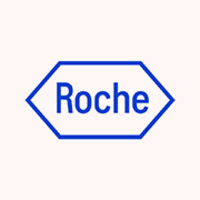Tech Giants Stumble as Pharma Industry Rises in Germany
August 3, 2024, 9:52 am

Location: United States, California, South San Francisco
Employees: 10001+
Founded date: 1896
July 2024 was a month of turbulence for the tech giants. The once soaring market caps of companies like Alphabet and Microsoft took a nosedive. Investors, once enamored with the promise of artificial intelligence, began to question the sustainability of their investments. The bloom of AI seemed to fade, revealing the thorns of high costs and modest returns.
In the first half of the year, tech stocks danced in the limelight. Investors were intoxicated by the potential of AI to revolutionize industries. But as the second-quarter earnings reports rolled in, the party came to an abrupt halt. The numbers told a different story. Costs ballooned, and the anticipated earnings from AI advancements remained elusive.
The tech sector is a double-edged sword. It can slice through market expectations or cut deep into investor confidence. This July, it was the latter. Companies that once basked in the glow of high valuations found themselves in the shadows of disappointment. The shift in investor sentiment was palpable.
Meanwhile, outside the tech bubble, the pharmaceutical industry was gearing up for a different kind of growth. German soil became fertile ground for investment. French pharmaceutical giant Sanofi announced a staggering 1.3 billion euro expansion in Frankfurt. This move was not just a financial commitment; it was a declaration of intent. Sanofi aims to bolster insulin production, a lifeline for millions suffering from diabetes.
The expansion will cover an area equivalent to five football fields. It’s a massive undertaking, set to operationalize by 2029. The German government, along with the regional state of Hesse, is backing this project. This partnership signals a robust commitment to the pharmaceutical sector.
Sanofi isn’t alone in this venture. Eli Lilly, another heavyweight in the pharma arena, is investing 2.3 billion euros in a new facility in Germany. Japan’s Daiichi-Sankyo and Switzerland’s Roche are also pouring billions into the country. This influx of capital underscores Germany’s strategic importance in the global pharmaceutical landscape.
The German government has rolled out the red carpet for pharma companies. An official strategy adopted in 2023 aims to streamline approval processes and enhance research and development conditions. This proactive approach is paying dividends. It’s a clear message: Germany is open for business, especially in the life sciences sector.
The contrast between the tech and pharma sectors is striking. While tech giants grapple with market corrections, the pharmaceutical industry is on an upward trajectory. The resilience of the pharma sector is noteworthy. It thrives on innovation and necessity, two elements that are crucial in today’s world.
Germany’s commitment to becoming a pharmaceutical powerhouse is evident. The country is positioning itself as a leader in biopharmaceutical production. The support from the government is a powerful signal to international companies. It’s an invitation to invest, innovate, and grow.
The tech sector, once the darling of investors, is now facing scrutiny. The optimism surrounding AI has dimmed. Investors are reassessing their portfolios, looking for stability. The shift in focus is not just a reaction to quarterly earnings; it’s a broader reflection of market dynamics.
As tech stocks stumble, the pharmaceutical industry stands tall. It’s a reminder that while technology captures the imagination, healthcare is a fundamental need. The investments pouring into Germany are a testament to the sector’s potential.
In the grand scheme of the economy, both sectors play vital roles. Tech drives innovation and efficiency, while pharma addresses critical health challenges. The interplay between these industries will shape the future.
Investors are now looking for safe havens. The pharmaceutical sector, with its steady demand and growth potential, is becoming increasingly attractive. It’s a shift from the high-risk, high-reward nature of tech investments to the more stable, essential nature of healthcare.
The market landscape is ever-changing. What was once a tech-dominated narrative is evolving. The rise of pharma in Germany is a case in point. It’s a reminder that in the world of business, fortunes can change overnight.
As we move forward, the focus will likely remain on the balance between innovation and necessity. The tech sector must adapt. It needs to prove that it can deliver sustainable growth. Meanwhile, the pharmaceutical industry will continue to thrive, fueled by investment and innovation.
In conclusion, July 2024 marked a pivotal moment. The tech giants faced a reckoning, while the pharmaceutical sector flourished. The landscape is shifting, and the future holds both challenges and opportunities. Investors must navigate this new terrain with caution and foresight. The dance between tech and pharma will define the economic narrative in the months to come.
In the first half of the year, tech stocks danced in the limelight. Investors were intoxicated by the potential of AI to revolutionize industries. But as the second-quarter earnings reports rolled in, the party came to an abrupt halt. The numbers told a different story. Costs ballooned, and the anticipated earnings from AI advancements remained elusive.
The tech sector is a double-edged sword. It can slice through market expectations or cut deep into investor confidence. This July, it was the latter. Companies that once basked in the glow of high valuations found themselves in the shadows of disappointment. The shift in investor sentiment was palpable.
Meanwhile, outside the tech bubble, the pharmaceutical industry was gearing up for a different kind of growth. German soil became fertile ground for investment. French pharmaceutical giant Sanofi announced a staggering 1.3 billion euro expansion in Frankfurt. This move was not just a financial commitment; it was a declaration of intent. Sanofi aims to bolster insulin production, a lifeline for millions suffering from diabetes.
The expansion will cover an area equivalent to five football fields. It’s a massive undertaking, set to operationalize by 2029. The German government, along with the regional state of Hesse, is backing this project. This partnership signals a robust commitment to the pharmaceutical sector.
Sanofi isn’t alone in this venture. Eli Lilly, another heavyweight in the pharma arena, is investing 2.3 billion euros in a new facility in Germany. Japan’s Daiichi-Sankyo and Switzerland’s Roche are also pouring billions into the country. This influx of capital underscores Germany’s strategic importance in the global pharmaceutical landscape.
The German government has rolled out the red carpet for pharma companies. An official strategy adopted in 2023 aims to streamline approval processes and enhance research and development conditions. This proactive approach is paying dividends. It’s a clear message: Germany is open for business, especially in the life sciences sector.
The contrast between the tech and pharma sectors is striking. While tech giants grapple with market corrections, the pharmaceutical industry is on an upward trajectory. The resilience of the pharma sector is noteworthy. It thrives on innovation and necessity, two elements that are crucial in today’s world.
Germany’s commitment to becoming a pharmaceutical powerhouse is evident. The country is positioning itself as a leader in biopharmaceutical production. The support from the government is a powerful signal to international companies. It’s an invitation to invest, innovate, and grow.
The tech sector, once the darling of investors, is now facing scrutiny. The optimism surrounding AI has dimmed. Investors are reassessing their portfolios, looking for stability. The shift in focus is not just a reaction to quarterly earnings; it’s a broader reflection of market dynamics.
As tech stocks stumble, the pharmaceutical industry stands tall. It’s a reminder that while technology captures the imagination, healthcare is a fundamental need. The investments pouring into Germany are a testament to the sector’s potential.
In the grand scheme of the economy, both sectors play vital roles. Tech drives innovation and efficiency, while pharma addresses critical health challenges. The interplay between these industries will shape the future.
Investors are now looking for safe havens. The pharmaceutical sector, with its steady demand and growth potential, is becoming increasingly attractive. It’s a shift from the high-risk, high-reward nature of tech investments to the more stable, essential nature of healthcare.
The market landscape is ever-changing. What was once a tech-dominated narrative is evolving. The rise of pharma in Germany is a case in point. It’s a reminder that in the world of business, fortunes can change overnight.
As we move forward, the focus will likely remain on the balance between innovation and necessity. The tech sector must adapt. It needs to prove that it can deliver sustainable growth. Meanwhile, the pharmaceutical industry will continue to thrive, fueled by investment and innovation.
In conclusion, July 2024 marked a pivotal moment. The tech giants faced a reckoning, while the pharmaceutical sector flourished. The landscape is shifting, and the future holds both challenges and opportunities. Investors must navigate this new terrain with caution and foresight. The dance between tech and pharma will define the economic narrative in the months to come.
